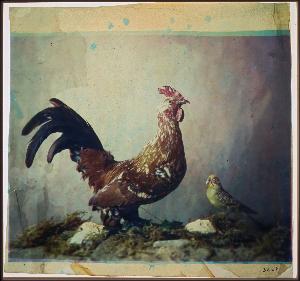Louis Arthur Ducos Du Hauron
Louis Arthur Ducos Du Hauron;Ducos Du Hauron
Place: Langon
Born: 1837
Death: 1920
Biography:
Louis Arthur Ducos du Hauron was a French pioneer of color photography, born on December 8, 1837, in Langon, Gironde, France, and died on August 31, 1920, in Agen, France. He developed practical processes for color photography on the three-color principle, using both additive and subtractive methods.
Early Life and Career
Ducos du Hauron wrote an unpublished paper setting forth his basic concepts in 1862 and worked on developing practical processes for color photography. In 1868, he patented his ideas (French Patent No. 83061) and in 1869, he published them in Les couleurs en photographie, solution du problème.
Photography
The discovery of dye sensitization by Hermann Wilhelm Vogel in 1873 greatly facilitated the initial three-color analysis on which all of Ducos de Hauron's methods depended. The most widely reproduced of his surviving color photographs is the View of Agen, an 1877 image of a landscape in southern France, printed by the subtractive assembly method he pioneered.
Notable Works and Contributions
Some of his notable works include:
- Nature morte (Nicéphore Niépce Museum, Chalon-Sur-Saône, France), a graphite painting.
- Still life with rooster (George Eastman Museum, Rochester, United States), a photograph.
In 1891, he introduced the anaglyph stereoscopic print, the "red and blue glasses" type of 3-D print.
Legacy and Further Reading
For more information on Louis Arthur Ducos du Hauron's work, visit Wikioo.org or check out his page on Wikipedia. You can also explore the Musée Maurice Denis collection on Wikioo.org.
Conclusion
Louis Arthur Ducos du Hauron was a pioneer in the field of color photography, and his contributions to the development of this art form are still celebrated today. His work can be found on Wikioo.org, where you can also learn more about other famous artists and their works.


